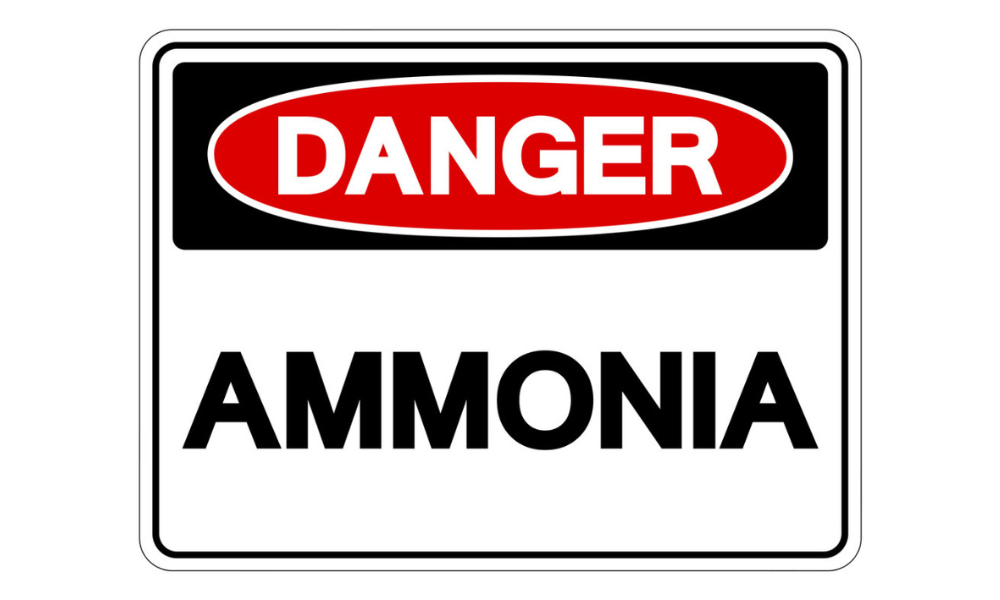Tragic events at an ice-making facility have brought dangerous, colourless gas into the spotlight

In May, a worker died after an ammonia leak at an ice-making facility in B.C. The colourless gas is extremely hazardous and presents severe health and safety hazards and risks. This is why it is so important for workplaces to understand the risks associated with ammonia, and put into place a proper plan to prevent unnecessary injuries or fatalities.
“Workplaces need to have proper controls and procedures in place on the safe handling, use and storage of ammonia due to the severe health and safety hazards and risks that are present with its use,” says Mathew MacLeod, Occupational Health and Safety Specialist, Canadian Centre for Occupational Health and Safety (CCOHS).
There are a range of risks. As a compressed gas, it can explode if the vessel that it is in is exposed to enough heat. MacLeod also says that it is highly flammable, and high concentrations in the air can be a fire and explosion hazard – especially in areas with poor ventilation and potential ignition sources.
In terms of worker exposure, “it is very toxic and can be fatal at high concentrations if inhaled. It can be fatal within only a few breaths.” Ammonia can be corrosive to the respiratory tract, and can cause skin burns and eye damage. MacLeod says that it can even cause frostbite. Among other things, severe irritation of the nose, throat and airways can occur.
He adds that “the level of danger really does depend on the concentration of ammonia and how long you've been exposed to it.”
With all that said, there should absolutely be control measures in place, and written workplace procedures for the safe handling, use and storage of ammonia. These controls and procedures need to be based on information that is in the Safety Data Sheet (SDS), the manufacturer’s instructions as well as the specific hazards and risks present at the workplace.
There should also be emergency procedures and first aid measures in the place of an event [such as] a spill, release or worker exposure,” says MacLeod. And workers need to be trained on all of the procedures, as well as the potential hazards of working with ammonia. Leaks, spills or failures of safety equipment such as ventilation systems need to be reported and addressed per the workplace emergency procedures.
“Workers should never work alone with ammonia and if they are exposed should seek out medical attention immediately,” says MacLeod. In addition, some may not realize but the symptoms of exposure can actually be delayed, so it is important to monitor for symptoms after exposure in case.
Another key part of protecting workers against the hazards of ammonia is ensuring that there is proper ventilation.
Ammonia should always be stored in an area that is cool, dry, well ventilated, out of direct sunlight and away from heat and ignition sources, and separated from incompatible materials such as oxidizing agents, and acids.
It should also be in a locked area to prevent unauthorized access to it and separated from work areas,
“Make sure to store it in the original labeled shipping container,” says MacLeod, and make sure cylinders are secured in an upright position to a wall, a rack or other solid structure. empty containers may also contain hazardous residue and so these should be stored separately, he says.
It's important to always comply with all the applicable health and safety regulations, fire and building codes, pressure vessel regulations, Transportation of Dangerous Goods (TDG) regulations, and other federal, provincial and local laws that may apply.
In addition, qualified individuals should be inspecting and maintaining containers and system components following the manufacturer’s instructions, and making sure that only qualified individuals perform this work while using the pressure regulator most appropriate for the cylinder pressure and contents.
Because of its flammability, eliminate heat and ignition sources such as sparks, open flames, hot surfaces and even static discharge in areas where it is used or stored – as well as posting ‘no smoking’ signs in areas where ammonia is used and stored.
MacLeod also says workplaces should consider the use of a 24-hour continuous ammonia monitor which is connected to an alarm system.





